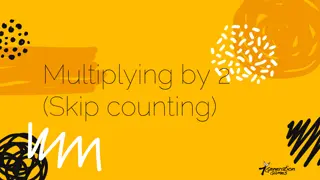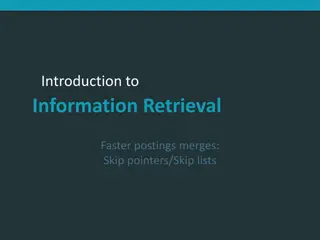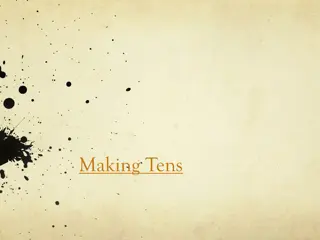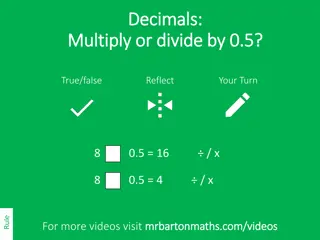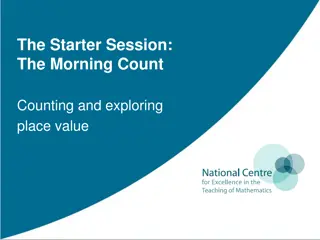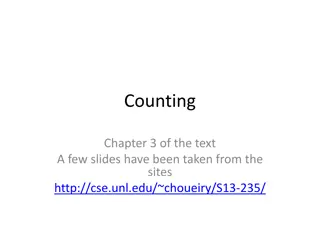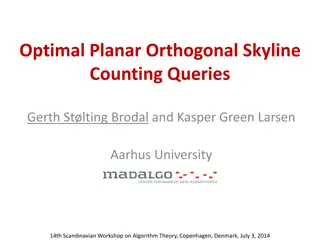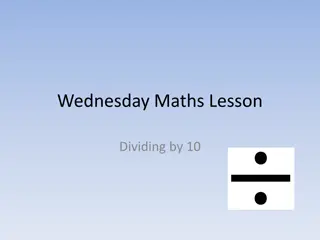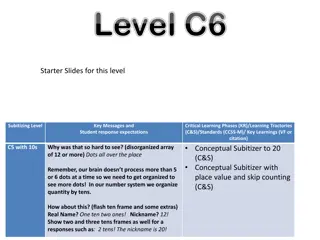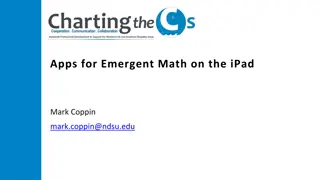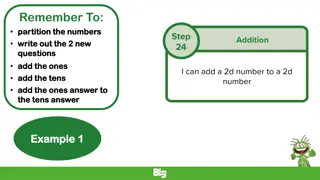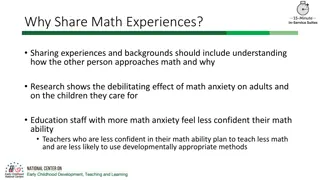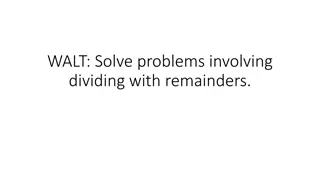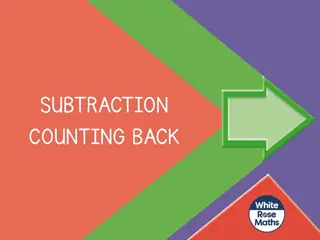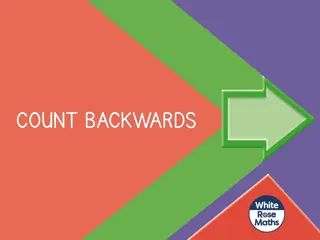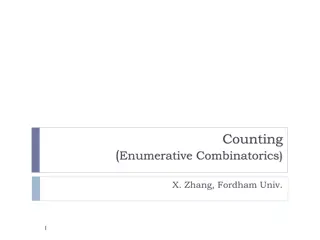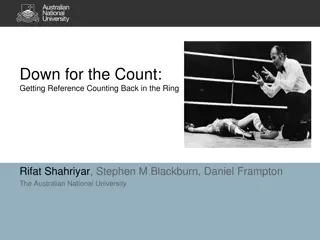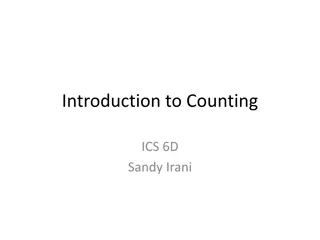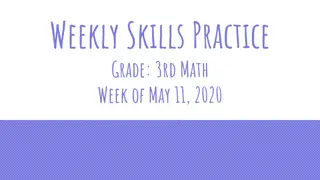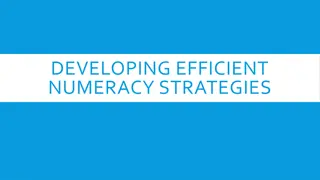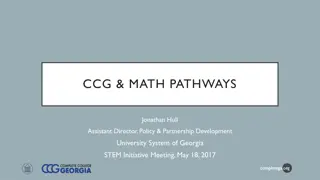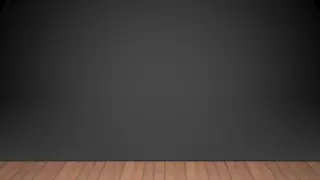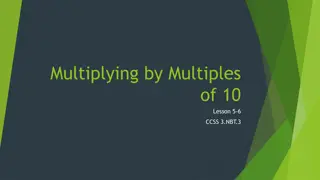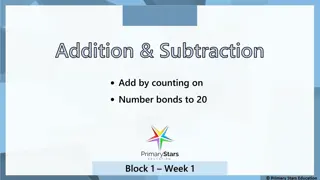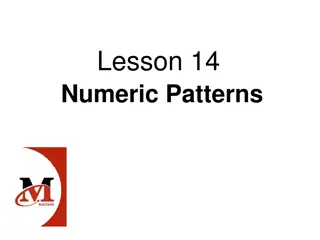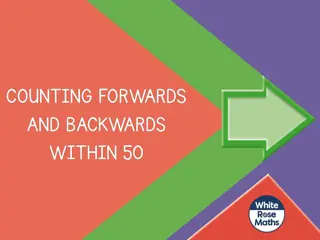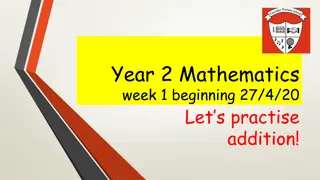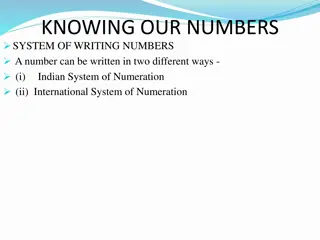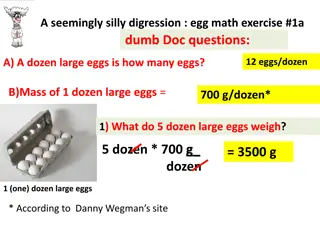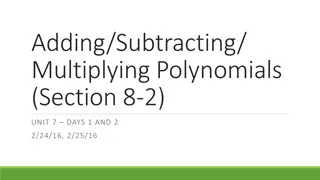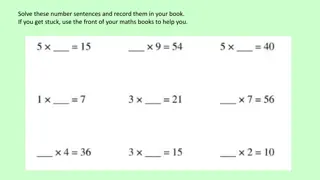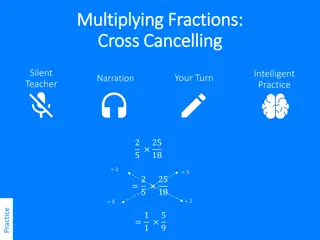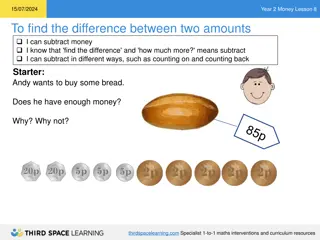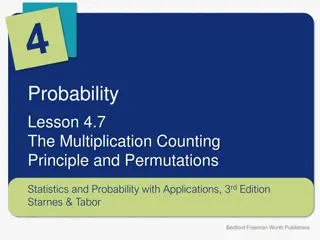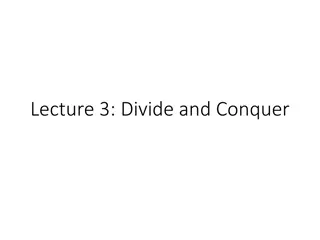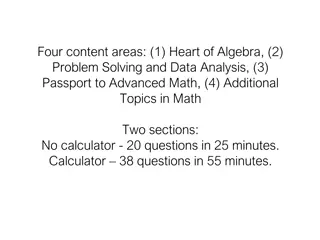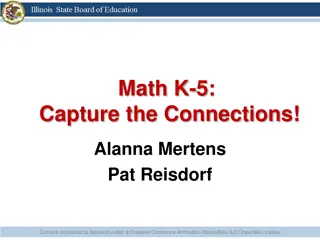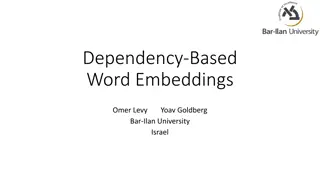Math Module 1 Lesson 2: Skip Counting, Building Tens, Multiplying and Dividing by 10
In this lesson, students will practice skip counting, building tens, and multiplying and dividing by 10. They will learn how to count by 3s and 4s, build tens, change units, and multiply/divide by 10 using visuals and examples. The lesson also includes an application problem involving sharing pencils among classrooms and a concept review on the relationship between adjacent units in the place value chart.
Download Presentation

Please find below an Image/Link to download the presentation.
The content on the website is provided AS IS for your information and personal use only. It may not be sold, licensed, or shared on other websites without obtaining consent from the author. Download presentation by click this link. If you encounter any issues during the download, it is possible that the publisher has removed the file from their server.
E N D
Presentation Transcript
MATH MODULE 1 LESSON 2
Skip Counting & Taking Out the Tens Skip count by 3s up to 36. (crossing the tens) Skip count by 4s up to 48. (crossing the tens) Write 83 ones - _____ tens _____ ones Write 103 ones - _____ tens _____ ones Write 163 ones _16__ tens __3__ ones _26_ tens __3__ ones _87_ tens __5__ ones Write 263 ones Write 875 ones -
Build Tens and Change the Units & 10 hundreds = 1 thousand____ 10 tens = 1 ____ 10 ones = 1 ____ 10 tenths = 1 ____ 10 thousandths = 1 ____ 10 hundredths = 1 _____
Multiply and Divide by 10 Draw 3 ones disks and write the number 3 under the disks. 3 Multiply by 10. Cross out each disk and the number 3 to show that you re changing its value. Then draw arrows to the tens column and write 3 tens disks and write 3 below the disk in the tens and a 0 in the ones. 0 3 3
Multiply and Divide by 10 Draw 5 tenths disk and write the number 5 under the disk. 5 Multiply by 10. Cross out each disk and the number 5 to show that you re changing its value. Then draw arrows to the ones column and write 5 ones disks and write 5 below the disk in the ones and a 0 in the tenths.
Multiply and Divide by 10 Show your work on your mat. .8 x 10 60 x 10 .04 x 10 40 / (divided by ) 10 2 / 10 .3 / 10
Application Problem A school district ordered 247 boxes of pencils. Each box contains 100 pencils. If the pencils are to be shared evenly amongst 10 classrooms how many pencils will each class receive? Draw a place value chart to show your thinking.
Concept Development - Review Share with a partner, small group or as a class what you remember from Lesson 1 about how adjacent units on the place value chart are related. Moving one position to the left of the place value chart makes units 10 times larger. Conversely, moving one position to the right makes units 1 tenth the size
Concept Development Problem 1-4 . 3 6 7 3 6 7 0 . 3 6 7 3 6 7 Write 2 complete number sentences on your board
Concept Development Problems 1-4 Explain in your Math notebook how you got your answer. What are similarities and differences between the two answers? Digits are the same but their values have changed so their position in the number is different. The 3 is ten times larger in the product than in the factor. It was 3 hundreds, now it is 3 thousands. The 6 started out as 6 tens, but once it was divided by 10, it is now 1 tenth as large because it is 6 ones.
Concept Devolvement Problem 1-4 . 4 3 6 7 4 3 6 7 0 . 4 3 6 7 4 3 6 7 Write 2 complete number sentences on your board
Concept Development Problems 1-4 Explain in your Math notebook how you got your answer. What are similarities and differences between the two answers? Digits are the same but their values have changed so their position in the number is different. The 4 is ten times larger in the product than in the factor. It was 4 thousands, now it is 4 ten thousands. The 7 started out as 7 ones, but once it was divided by 10, it is now 1 tenth as large because it is 7 tenths.
Concept Development Problems 1-4 What patterns do you notice in the number of zeros in the product and the placement of the decimal in the quotient? What do you notice about the number of zeros in your factors and the shift in places in your product? What do you notice about the number of zeros in your divisor and shift in places in your quotient? (Have students discuss in a group or write their observation.) Students Share
Concept Development Problems 5-8 Now solve in your math notebook (spiral) by visualizing your place value mat and recording only your products and quotients. You may check your work using a place value mat. 215.6 x 100 215.6 100 3.7 x 100 3.7 100
Concept Development Problems 5-8 Compare your work with your those at your table. Do you agree? How many times did the digit shift in each problem and why? Share your thinking with your table. The digits shifted 2 places to the left when we multiply and shifted 2 places to the right when we divide. This time the numbers each shifted 2 places because there are 2 zeros in 100. The values of the products are 100 times as large, so the digits had to shift to larger units. The values of the quotient are 1 hundredth as large, so the digits had to shift to smaller units.
Concept Development Problems 9-10 In your math writing journal explain how you would go about solving the following problems. Make sure to be very descriptive and to give the solution. 0.482 x 1000 482 1000
Problem Set, Debrief, and Exit Ticket Are there any questions, comments, or suggestions from the class or for your classmates? You will now work with a partner to complete the problem sets. You will be given 10 minutes to work on as many problems in the set as possible. Debrief by checking some of the problem sets and/or having a discussion on some that did not get completed. Complete the Exit Ticket. Please turn into the correct location.
Homework Complete all problems. Reminders: Make sure to follow all directions given and be very specific in your explanations when asked to explain. Due on _________________


